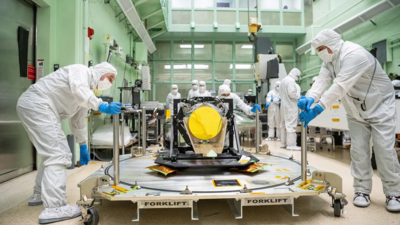Nasa has revealed the first look of a full-scale prototype for six telescopes that will enable, in the next decade, the space-based detection of gravitational waves—ripples in space-time caused by merging black holes and other cosmic sources. This advancement is part of the LISA (Laser Interferometer Space Antenna) mission, a collaborative effort between Nasa and the European Space Agency (ESA). The mission will utilize an array of spacecraft to measure minuscule changes in distance—down to picometers, or trillionths of a meter—across a vast configuration larger than the Sun itself.
The triangular formation of spacecraft will span approximately 1.6 million miles (2.5 million kilometers) on each side.
Highlighting the crucial role of twin telescopes aboard each spacecraft, Ryan DeRosa, a researcher at Nasa’s Goddard Space Flight Center said, “Twin telescopes aboard each spacecraft will both transmit and receive infrared laser beams to track their companions, and Nasa is supplying all six of them to the LISA mission .” Central to this initiative is the Engineering Development Unit Telescope, a prototype designed to inform the construction of the mission's flight hardware. Manufactured and assembled by L3Harris Technologies in Rochester, New York, the prototype arrived at Goddard in May.
Its primary mirror is coated in gold, enhancing the reflection of infrared lasers and minimizing heat loss in the cold vacuum of space. This feature is vital, as the telescope is opt.


















